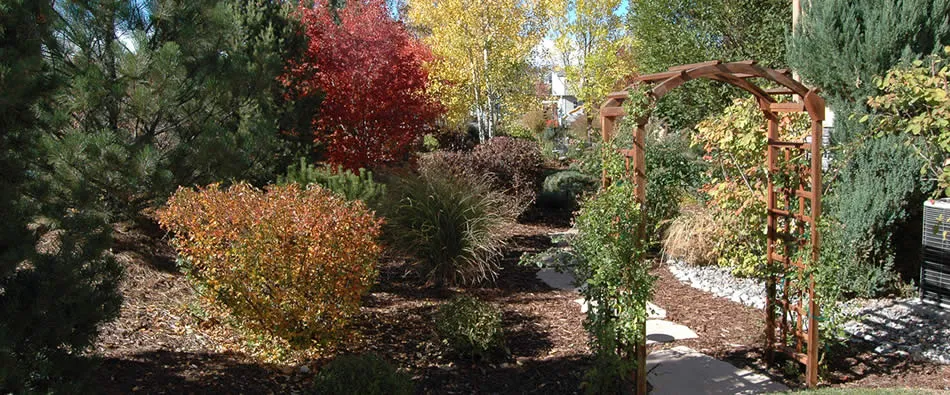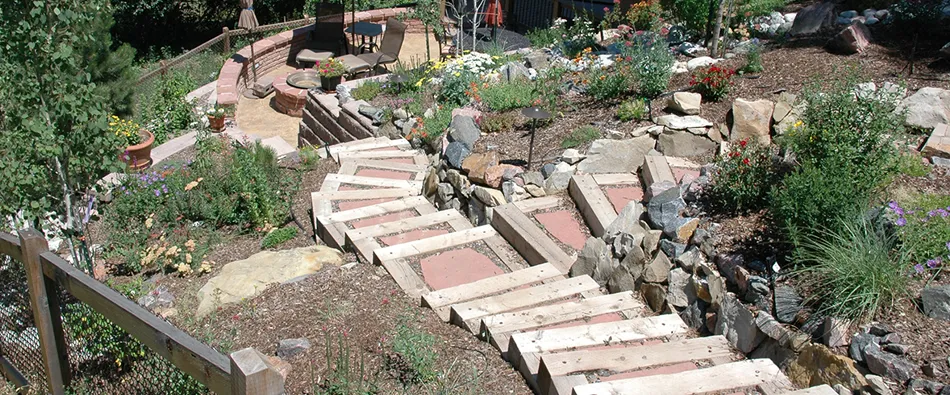There is much to do come when fall weather comes with your landscape needs, and it could be hard work. If you have a landscaping company already discuss with them what it is here we speak of and if not you may want to consider one if this is too much for you.
Mowing
Do it every week or so until the grass has stopped growing. For lawns under or near deciduous trees, using your mower's mulching mode—in which discharge chutes are closed off so that the grass and leaves can be chopped more finely—also allows leaves to decompose on your lawn without being smothering Most newer rotary mowers and lawn tractors have a mulching mode. If yours doesn't, remove leaves by raking them up for bagging or composting.
Seeding
Fall and winter are also good times to lay seed so that your lawn gets a head start in the spring.
For warmer-winter areas: If the soil doesn't freeze where you live, fall is the best time of year to sow seed for a new lawn, to repair bare spots in an old lawn, or to overseed a dormant summer lawn.
Where winters are cold: In northern states, where the soil freezes, it's already too late to seed for fall germination. Instead, wait until the soil thaws to sow the seed; it will lie dormant until spring. Cover the seeds lightly with straw or mulch to protect them from feeding birds. This works best on level ground since sloped ground can allow the seeds to wash away before they can germinate.
Dethatch or aerate, or do both
Dethatching involves pulling vertically oriented tines through the turf; aerating involves extracting small cores of soil. Both reduce thatch, a layer of dead grass stems and roots (not clippings) that build up faster than they can decompose, be accumulating on top of the soil layer and reducing water penetration to the roots.
When to dethatch or aerate: For cooler areas, do either if there's at least another month before the first frost. By mid-October, it's too late in the northern states, but just the right time for lawns in the upper South (or "transition zone"). Caution: Dethatching can damage warm-season grasses, such as St. Augustine grass and centipede grass, that spread via surface runners.
What to use: Hand dethatchers, also called cavex rakes, and foot-powered aerators are suitable for small lawns. Well-stocked nurseries typically offer both.
Powered dethatching machines include power rakes and vertical mowers you can rent (about $60 per day). The blades aren't firmly attached on power rakes and usually are on vertical mowers. Loosely attached tines are safer since they can bounce off rocks, sprinkler heads, and stepping-stones without breaking off.
Powered aerators have either curved steel coring tubes mounted on a drum or straight coring tubes on a shaft that pushes them vertically into the soil. As with powered dethatching machines, you can rent aerators for about $60 per day.
Soil testing
A soil test is the only way to determine the pH and nutrient needs of your lawn. Spread ground-up or dolomitic limestone (granular is easiest to handle) or soil sulfur if the results of a soil test indicate one or the other is needed.
Getting a soil test: check with your landscaper, or, check with your nearest university cooperative extension office. Many garden centers also offer soil testing. Expect to pay less than $10 to determine pH only.
Water your lawn thoroughly
If rains have been sparse recently, apply plenty of water, even if temperatures are cool. Lawns that enter winter stressed from drought are likelier to be damaged by cold weather and emerge weaker in the spring. Watering is especially important in mountainous western regions of the U.S., where dry falls are typically followed by cold winters.
Trees and shrubs
Plant trees, shrubs, and vines
For cooler regions, planting now through the end of October gives most plants a head start in the spring, since roots will grow in the still-warm soil long after air temperatures drop. Where winters are mild, the fall planting season extends into winter. Be sure to soak the root ball thoroughly at least weekly if the weather is dry in your area. In the frigid North, apply mulch after the soil freezes to prevent the soil around plants from thawing and refreezing, which can damage tender new roots. For more about planting, see How to plant trees and shrubs.
Protect plants from rodents
Keep mice, moles, and other rodents from feeding on the bark of young trees in winter by wrapping a cylinder of 1/2-inch-mesh hardware cloth around the trunk. Leave at least 1 inch between the mesh and trunk, and push the mesh 3 inches into the soil. Plastic wraps that extend 2 feet above the snow line protect the trunk from rabbits. Remove the mesh in spring.
Protect tender evergreens from cold
Boxwood, holly, and rhododendrons often suffer in winter because their leaves lose moisture, or transpire, on sunny days without replacing it with the soil when it's frozen.
What to do: Surround these plants with a shelter of burlap or old sheets. Drive three to five narrow stakes around the plant and pull the material taut over them so that it doesn't rest on leaves or branches; secure in place with staples. The material creates shade and slows wind, both of which serve to reduce transpiration.
Provide additional protection by using an anti-transpirant spray on the foliage after the first hard frost. The spray will dry into a thin film that reduces the moisture lost by transpiration.
Water
Soak soil around trees and shrubs if rainfall has been light to ensure that plants enter winter fully hydrated.
Pruning
Late winter through early summer is the time to prune most trees and shrubs. Prune lightly to repair broken or damaged limbs or to minimally shape trees and shrubs. See our special on how to prune trees.
Flowers and gardens
Plant bulbs
Fall is the time to plant crocus, daffodils, hyacinths, tulips, and other spring-flowering bulbs throughout most of the country.
Which to plant when: While you should plant most bulbs by late October, you can plant tulips as late as November and, in the mild-winter West, as late as New Year's Day. Also, plant spring-flowering anemone and ranunculus. Then overplant bulbs with early-flowering perennials, such as basket-of-gold (Aurinia saxatilis) and English primrose (Primula x polyantha).
How to plant: Plant large bulbs, such as daffodils and tulips, about 8 inches deep, and smaller bulbs, such as crocus, about 5 inches deep. If you're combining them with other bulbs, figure on two to three daffodil and tulip bulbs (full-size varieties) per square foot. For smaller bulbs, plant three to five per square foot—twice as many for a solid bed of color. Plant all bulbs with the pointed end up. To get bulbs of the same type to bloom at once, plant them at the same depth.






